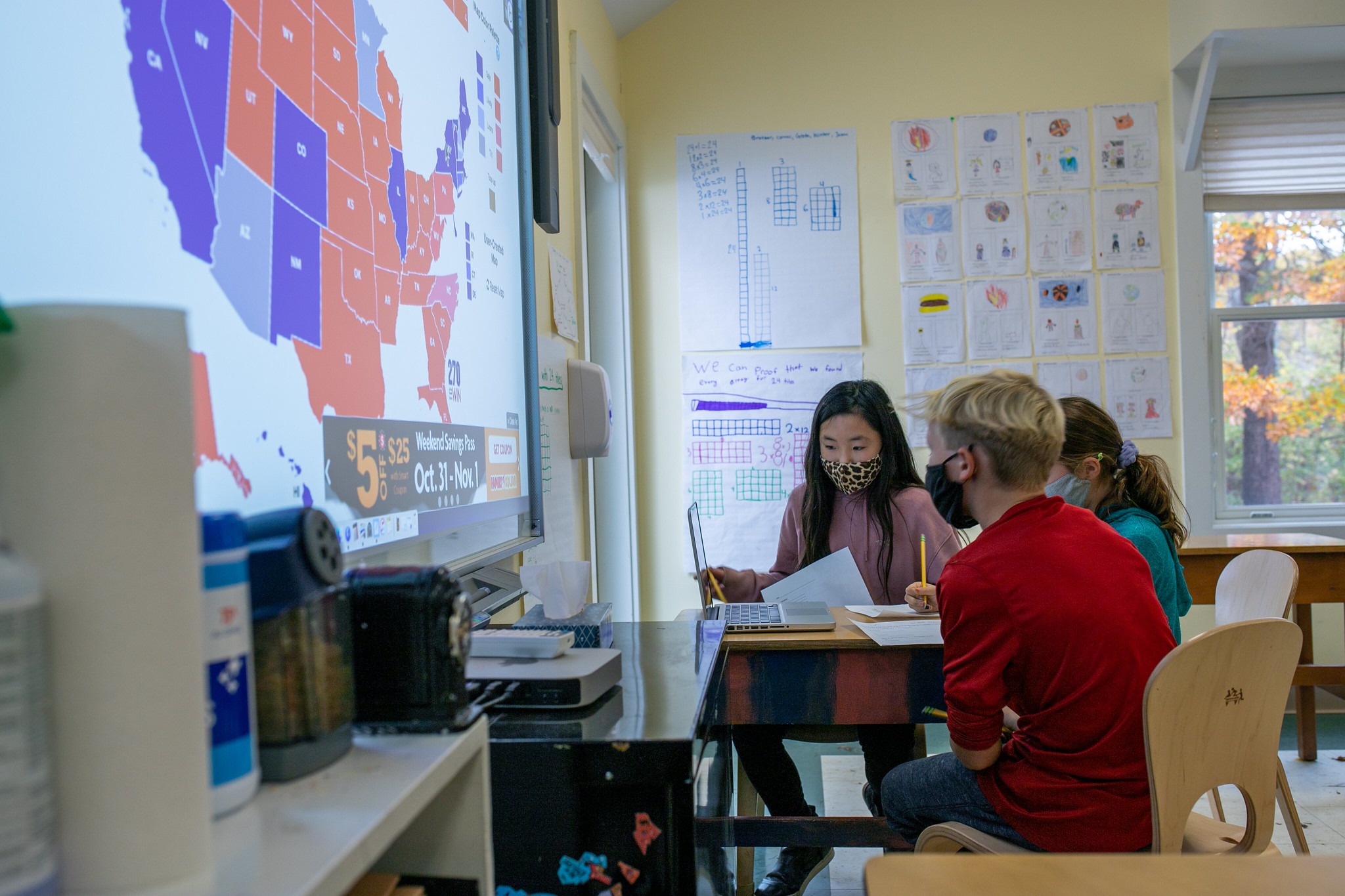Fourth Grade Voting Rights Project


Students are learning how important it is to exercise your right to vote, especially when so many have been denied the right for so long.
Kelly Tieger, Fourth Grade Teacher
Ms. Tieger’s fourth grade classroom is adorned with bright decorations and color-splashed desks. It is a warm space in which to learn. Among the posters and chart paper containing promises for the year ahead is a sign that reads, “Please Vote On the 3rd” and an array of Time for Kids magazine covers related to social justice and the United States government. Most days, you can walk by and see an interactive 2020 Electoral Map on the SmartBoard with its red-to-blue gradient.
In the weeks leading up to Election Day, Ms. Tieger designed a project centered around the history of voting rights in the United States to encourage her students to better understand the power of a vote.
“Students are learning how important it is to exercise your right to vote, especially when so many have been denied the right for so long—and many still are,” shares Ms. Tieger. “We identified and explored which groups have always had the right to vote, as well as groups that have had to fight for the same right.”
As a way to synthesize their findings, they created a digital timeline beginning in 1789 when only 6% of Americans could vote—white, Christian, land-owning men who were over the age of 21. The timeline progresses and captures important milestones and modifications to the United States voting system up through this year’s election.
LEARN: View the Fourth Grade Digital Voting Rights Timeline
What do Ms. Tieger’s students want you to learn from their digital timeline? They explain, “It is our hope that we will encourage everyone who can to vote on or before November 3rd because so many people had to fight for this important right.”




This website uses cookies so that we can provide you with the best user experience possible. Cookie information is stored in your browser and performs functions such as recognising you when you return to our website and helping our team to understand which sections of the website you find most interesting and useful.
Read our full privacy policy for more information.
Strictly Necessary Cookie should be enabled at all times so that we can save your preferences for cookie settings.
If you disable this cookie, we will not be able to save your preferences. This means that every time you visit this website you will need to enable or disable cookies again.
This website uses Google Analytics to collect anonymous information such as the number of visitors to the site, and the most popular pages.
Keeping this cookie enabled helps us to improve our website.
Please enable Strictly Necessary Cookies first so that we can save your preferences!